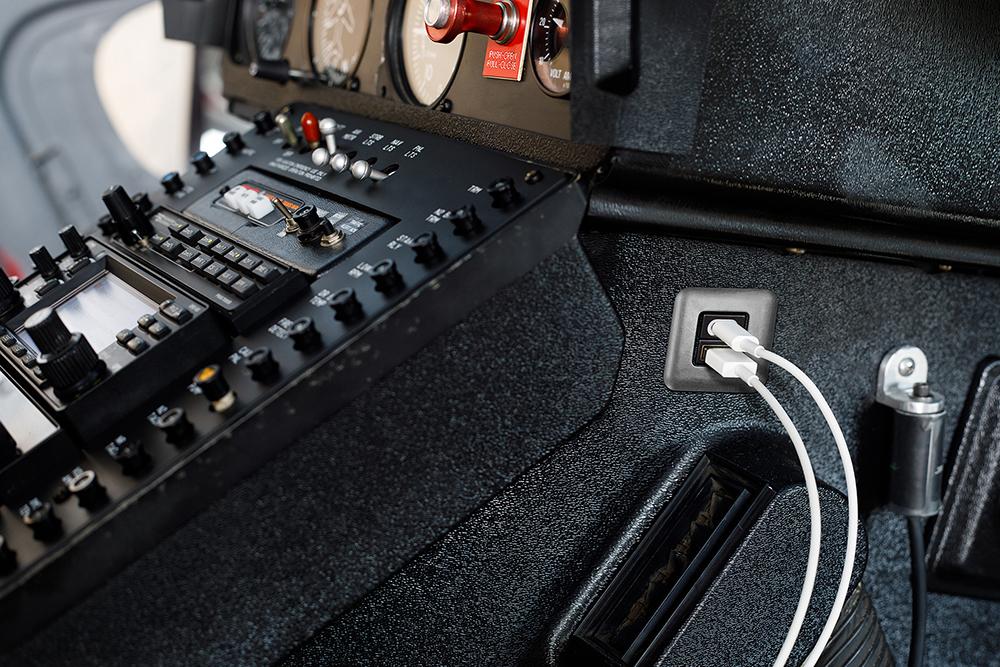
As trends in personal electronic devices move toward higher power needs and more unified charging technology, aviation manufacturers and airlines are looking to adapt electrical power systems in the cabin and cockpit.
True Blue Power, which specializes in electrical power systems for the aerospace industry, is observing more airlines looking to upgrade charging options in the passenger cabin and cockpit. According to Tom Genovese, director of commercial transport and defense at True Blue Power, many airlines recently upgraded or are in the process of retrofitting cockpits with its MAX Power USB-C chargers, including easyJet, ITA Airways, Jet2, Norwegian Air Shuttle, SkyUp and Spicejet.
While it might be expected that airlines would opt for lower-power charging solutions, Genovese says many are opting for in-seat solutions that actually provide enough power to charge laptop computers.
“What we’ve seen after the airlines started recovering from the pandemic was that they were looking for higher power solutions to adapt to the newer technology that’s becoming available for their passengers,” he says. “We’re also seeing that pilots are looking for more power, because the tablets they’re using require a power increase from the first-generation versions they were previously using”
Genovese notes that many of these upgrades are likely being driven by the European Union’s recent rule change in June, which requires that all new smartphones and similar electronic devices sold in its member countries must have a USB-C charging port by fall of 2024. The EU says the measure is meant to reduce electronic waste and make consumers’ lives easier.
“If that’s going to be the trend now—that all personal electronic device chargers need to be USB-C—that’s going to transition the industry pretty quickly from USB-A to USB-C,” says Genovese. He adds that installations of in-seat USB-C power provide advantages over traditional AC outlets, providing approximately the same amount of power with easier installation, lighter weight and lower costs for airlines. Typically, he says, these types of retrofits take a day or two to complete.
Genovese says cockpit installations are even simpler, often involving replacing a cigarette ashtray with an adapter plate that holds a USB charger. These types of installations can be completed in approximately three of four hours during an overnight stay, which does not require much aircraft downtime.
However, as charging demands increase, Genovese cautions that “there is some homework that has to be done before the installation actually begins,” such as electrical load analysis on aircraft to make sure there are enough power converters to provide enough power to USB chargers in each seat.
True Blue Power has also just released a higher-voltage version of its MAX Power USB Chargers to accommodate expected airline demand for increased charging power. According to the company, the new 100-watt USB-C charging ports deliver seven times more power than competing products with the ability to supply power for smartphones, tablets, electronic flight bags and headphones. The new chargers are available in single or dual configuration, as well as lighted and non-lighted configurations.





